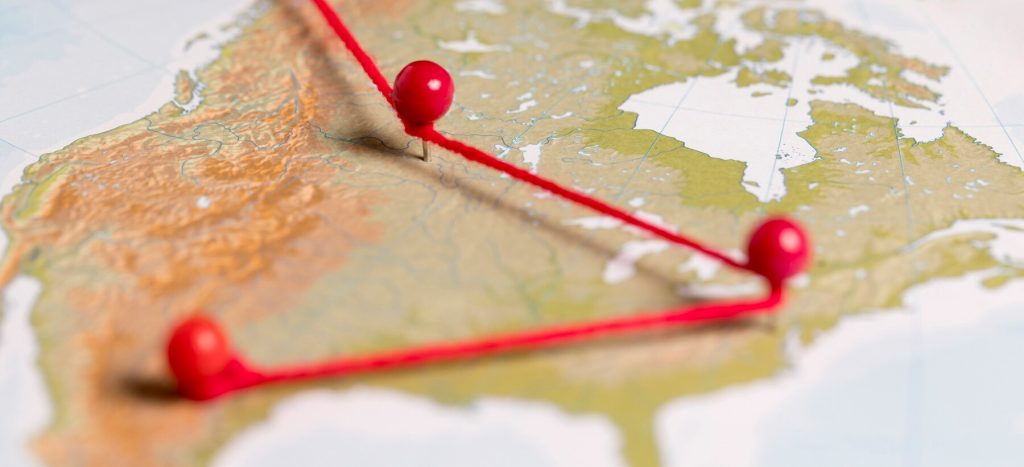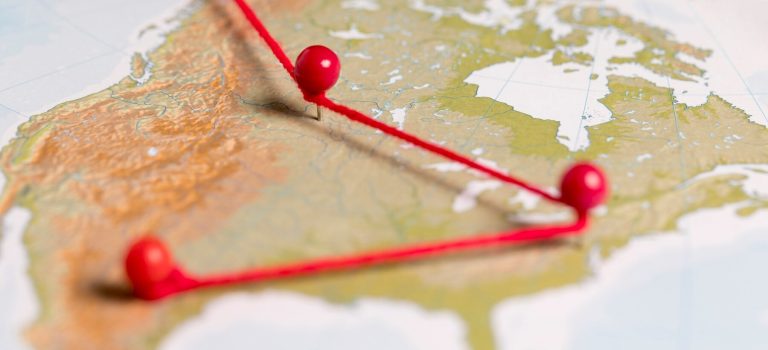
The e-commerce landscape is vast, with countless businesses vying for the attention of a global audience. Understanding your target market is crucial to standing out and capturing a loyal customer base. Geographic segmentation, a marketing strategy that divides your audience based on location, offers a powerful tool to achieve this.
This blog post explores the world of geographic segmentation in e-commerce. We’ll explore the benefits, share practical implementation strategies, and examine real-world examples of brands leveraging location-based targeting. By the end, you’ll be equipped to tailor your online store’s marketing campaigns and product offerings to resonate with customers across different regions.
The Power of Location-Based Marketing: Statistics and Importance
Geographic segmentation isn’t just a trend; it’s a data-driven approach with proven effectiveness. Consider these compelling statistics:
- Location-driven marketing campaigns can boost conversion rates by up to 800%
- 84% of marketers agree that location data is crucial for delivering personalized customer experiences.
These numbers highlight the power of geographic segmentation. By understanding your customers’ locations, you can tailor messaging, product recommendations, and website experiences to resonate with regional preferences and needs. This personalized approach fosters stronger customer relationships, increasing sales and brand loyalty.
Why Location Matters: Unlocking the Benefits of Geographic Segmentation
Geographic segmentation offers a multitude of benefits for e-commerce businesses:
- Increased Targeting Efficiency: Focus your marketing efforts on regions with the highest customer concentration or strongest sales potential. Geographic segmentation allows you to focus your marketing efforts on specific areas with the highest customer concentration or strongest sales potential. This laser-focused approach eliminates wasted resources and maximizes the impact of your marketing campaigns.
- Personalized Customer Experiences: Customers crave a shopping experience that feels like it’s designed just for them. Geographic segmentation unlocks this potential. By understanding regional preferences and buying habits, you can deliver targeted content, product recommendations, and promotions that resonate with your audience. Imagine showcasing winter sports gear to customers in snowy regions and beach essentials to those in coastal areas. This personalized approach fosters stronger customer relationships and ultimately drives sales.
- Optimized Inventory Management: Stock your inventory based on regional demand, minimizing storage costs and ensuring popular products are readily available. You can optimise your inventory management by understanding regional demand for specific products. Stock your warehouses with popular items based on anticipated regional sales, minimizing storage costs and ensuring customers can find the products they’re looking for without delays.
- Dynamic Shipping Cost Display: Geographic segmentation allows you to showcase accurate shipping costs based on customer location right from the start. This transparency builds trust and reduces cart abandonment rates, leading to a smoother checkout process and, ultimately, higher sales conversions.
- Localized Marketing Campaigns: Develop marketing campaigns with language, imagery, and messaging tailored to specific regions or countries.
- Hyperlocal Marketing: Target customers in specific towns or neighborhoods with highly focused promotions and special offers.
By leveraging geographic segmentation, you can optimize your e-commerce operations, personalize the customer journey, and ultimately achieve long-term business growth.
Putting Location into Action: Implementing Geographic Segmentation Strategies
Now that you understand the power of geographic segmentation let’s explore how to implement this strategy in your e-commerce business:
1. Gather Customer Location Data
The foundation of successful geographic segmentation lies in data collection. Here are various reliable sources:
- Customer Accounts: Collect customer location data during account creation processes with clear opt-in options for privacy compliance.
- IP Targeting: Utilize IP addresses to identify a customer’s general location. However, be aware of limitations due to VPN usage and proxy servers.
- Geolocation Services: Integrate geolocation services with your website to capture more precise customer location data (user consent is required).
- Customer Surveys: Incorporate location-based questions in customer surveys to gain insights into customer preferences by region.
Analyzing Geographic Information with JazzUp AI
Geographic Segmentation is easier with JazzUp uses an AI system that analyzes the purchasing behavior, and other relevant customer data, including geographical location. Using sophisticated machine learning models, it then segments your customers into distinct groups based on shared characteristics, ensuring that each segment is well-defined and actionable for targeted marketing. JazzUp is able to stack insights from geographic segmentation with other segmentation types, allowing for a more accurate outcome.
Make geo-targeting for your online store a breeze with JazzUp AI.
2. Segment Your Audience Geographically
Once you have customer location data, segment your audience into distinct groups based on relevant geographic criteria:
- Country: Target marketing campaigns and product offerings based on national preferences and regulations.
- Region: Segment by state, province, or other regional divisions to cater to local variations in buying habits and needs.
- City or Town: Implement hyperlocal marketing strategies for targeted promotions and initiatives within specific towns or neighborhoods.
- Climate: Adjust product recommendations and marketing messages based on regional weather patterns and seasonal trends.
- Religion and culture: Adjust product recommendations based on cultural and religious influences. For instance, shoppers in more conservative cultures will have entirely different shopping choices in clothes than those in liberal societies.
3. Personalize the Customer Experience
Utilize your customer segments to personalize the e-commerce experience:
- Localized Website Content: Display website content in the appropriate language and showcase regional products or promotions prominently.
- Dynamic Product Recommendations: Recommend products based on customer location and regional buying trends.
- Targeted Marketing Campaigns: Develop email marketing campaigns and social media ads tailored to specific regions and their unique preferences.
- Shipping Cost Transparency: Display accurate shipping costs based on customer location, building trust and reducing cart abandonment rates.
Using JazzUp AI‘s cutting-edge segmentation solutions, you’ll gain insights on the customer segments, marketing strategies to reach them and ad copy to convert them.
By personalizing the customer experience based on location, you can establish a deeper connection with your audience and encourage them to convert.
How Businesses Use Location-Based Marketing
Case Study: Nordski Outfitters – Conquering Winter Sports Across the US
Nordski Outfitters, a leading online retailer of winter sports apparel and equipment, exemplifies the successful application of geographic segmentation.
- Understanding Their Customers by Region: Nordski recognized the diverse winter sports preferences across the United States. Skiers in the Northeast prioritize high-performance downhill gear, while customers in the Pacific Northwest favor snowboarding equipment and backcountry apparel.
- Tailored Marketing and Product Recommendations: Nordski personalizes its marketing campaigns and product recommendations based on customer location data. Northeastern customers receive targeted emails showcasing the latest downhill skis and performance outerwear. Pacific Northwest audiences see promotions for snowboards, backcountry backpacks, and avalanche safety gear.
- Dynamic Content and Localized Language: Nordski’s website displays regional variations in content. Northeastern landing pages emphasize downhill skiing destinations, while Pacific Northwest pages highlight snowboarding resorts and backcountry trails. Additionally, the website automatically adjusts language based on the customer’s IP address, catering to English and Spanish-speaking audiences.
The Outcome: Increased Sales and Customer Satisfaction
By implementing geographic segmentation, Nordski has achieved significant results:
- Increased Conversion Rates: Targeted marketing campaigns have led to higher conversion rates in specific regions.
- Reduced Cart Abandonment: Displaying accurate shipping costs based on location has boosted customer confidence and reduced cart abandonment rates.
- Enhanced Customer Satisfaction: The personalized shopping experience fosters customer satisfaction and loyalty, encouraging repeat purchases.
Nordski’s success story demonstrates the power of geographic segmentation in e-commerce. By understanding customer preferences based on location, they can tailor their offerings and marketing strategies, ultimately achieving a competitive edge in the winter sports market.
Case Study: The Spice Way – Tailoring Flavors Around the Globe

The Spice Way, an online retailer of exotic spices and seasonings, demonstrates the effectiveness of geographic segmentation for global audiences.
- Understanding Global Palates: The Spice Way recognizes that taste preferences vary significantly across regions. Europeans tend to favor herbs and milder spices, while Southeast Asian customers often seek bolder, spicier flavors.
- Localized Product Offerings and Content: The Spice Way tailors its product offerings and website content based on customer location. European customers see prominent displays of herbs de Provence, rosemary, and saffron. Southeast Asian audiences encounter promotions for chilies, curry pastes, and lemongrass. Additionally, website content is translated into multiple languages to cater to diverse regions.
- Localized Marketing and Payment Options: The Spice Way personalizes marketing campaigns and offers localized payment options. European customers receive email promotions highlighting European recipes and special offers in Euros. Southeast Asian audiences see ads featuring regional dishes and promotions in their local currency. Providing familiar payment methods builds trust and simplifies the purchase process.
The Outcome: Global Growth and Customer Satisfaction
By implementing geographic segmentation, The Spice Way has achieved significant global growth:
- Increased Market Penetration: Localized marketing campaigns have expanded their reach and customer base in new regions.
- Improved Customer Engagement: Targeted content and product recommendations resonate with local preferences, increasing customer engagement.
- Enhanced Brand Reputation: Catering to diverse tastes and offering seamless transactions fosters a positive brand reputation across the globe.
The Spice Way’s success story exemplifies the power of geographic segmentation in reaching a global audience. By understanding regional preferences and tailoring their offerings accordingly, they have established themselves as a trusted source for exotic flavors worldwide.
Considerations and Limitations of Geographic Segmentation
Geographic segmentation unlocks a treasure trove of benefits for e-commerce businesses. However, it is essential to have a clear understanding of the limitations of geographical segmentation and localized marketing to ensure responsible implementation and maximize its effectiveness.
Privacy Concerns in a Data-Driven World
The cornerstone of successful geographic segmentation lies in customer data. However, this data collection must comply with stringent regulations like GDPR (General Data Protection Regulation) and CCPA (California Consumer Privacy Act). Transparency is paramount. Customers must explicitly opt-in to data collection, and you must communicate how their location information will be used. Building trust through clear privacy policies and user-friendly opt-in mechanisms is essential.
Ensuring Data Accuracy: A Balancing Act
IP targeting, a standard method for location identification, has limitations. Customers using VPNs or proxy servers may present inaccurate location data. Similarly, customer-provided information requires verification to ensure precision. Leveraging a combination of data sources, like billing addresses and shipping preferences, can enhance accuracy. Additionally, offering location correction options on your website empowers customers to ensure their data is up-to-date.
Cultural Nuances: Beyond Regional Borders
While geographic segmentation within a country provides valuable insights, it shouldn’t be the sole factor. Cultural variations within regions can exist. For instance, segmenting the US by state might need to include the cultural nuances between the Northeast and the South. Conducting additional research into specific areas and incorporating cultural considerations into your marketing strategies can significantly enhance their effectiveness.
Global Appeal vs. Local Resonance: Striking the Right Balance
The power of geographic segmentation lies in its ability to cater to local preferences. However, maintaining a consistent brand image across all markets is crucial. Finding the right balance between regional optimization and brand identity is critical. Consider developing a core brand message that resonates globally while focusing on regional variations in product offerings, marketing materials, and website content. This ensures a cohesive brand experience while catering to specific customer preferences in different locations.
By acknowledging these limitations and implementing responsible data collection practices, e-commerce businesses can harness the true potential of geographic segmentation. It empowers you to navigate the complexities of a global marketplace, personalize the customer journey, and ultimately achieve long-term success. Remember, geographic segmentation is a powerful tool, but wielding it effectively requires a nuanced understanding of its limitations and a commitment to responsible data practices.
The Future of Location-Based Targeting
The future of geographic segmentation in e-commerce is bright, with advancements in technology offering exciting possibilities:
- Hyperlocal Targeting: Emerging technologies like geofencing will allow for even more precise targeting of customers within specific geographic areas.
- Real-Time Customer Location Data: With user consent, location data from mobile devices can provide valuable insights into customer behaviour and preferences in real time.
- Advanced Analytics: Machine learning and artificial intelligence will unlock more profound insights from customer location data, enabling even more effective segmentation strategies.
By embracing these advancements and continuously refining their approach, e-commerce businesses can ensure their geographic segmentation strategies remain at the forefront of marketing effectiveness.
Beyond Location: Additional Segmentation Considerations
While geographic segmentation is a powerful tool, it’s essential to consider a holistic approach to customer targeting. Here are some additional segmentation factors to explore in conjunction with location:
- Demographics: Segment your audience by age, gender, income level, and household size to refine your targeting and personalize product recommendations.
- Psychographics: Understanding customer values, interests, and lifestyles can further personalize your marketing messages and website content.
- Purchase Behavior: Analyze customer purchase history, browsing behavior, and preferred payment methods to identify trends and tailor offerings accordingly.
Combining geographic segmentation with these other factors can create highly targeted customer segments for maximum impact.
Leveraging Technology for Effective Segmentation
Technology plays a crucial role in successful geographic segmentation. Here are some valuable tools to consider:
- Customer Relationship Management (CRM) Systems: CRMs allow you to centralize customer data, including location information, for comprehensive segmentation strategies.
- Web Analytics Tools: Platforms like Google Analytics provide insights into customer location, browsing behavior, and conversion rates by region.
- Marketing Automation Tools: These tools enable you to automate targeted marketing campaigns based on location and other segmentation criteria.
- Geolocation Services: Integrate geolocation services with your website to capture more precise customer location data (with user consent).
By leveraging these technological advancements, you can gather valuable customer data, automate marketing tasks, and refine your geographic segmentation strategies.
Opportunities in Geographic Segmentation
Geographic segmentation is a powerful tool for e-commerce businesses of all sizes. Understanding your customer base beyond borders and implementing targeted strategies can create a more personalized and engaging shopping experience. This approach fosters customer loyalty, drives sales growth, and positions your online store for long-term success in the ever-evolving e-commerce landscape.
So, embark on your journey of geographic segmentation. Embrace data-driven insights, explore innovative technologies, and tailor your approach to resonate with customers across the globe. Remember, the world is your marketplace, and geographic segmentation is key to unlocking its vast potential.
Continuous Optimization in E-Commerce Geo-Targeting
Geographic segmentation is not a one-time solution; it’s an ongoing process of learning and optimization. Here are some key takeaways to remember:
- Start with Clear Goals: Define your segmentation goals, whether increasing sales, boosting customer engagement, or expanding your market reach.
- Gather Reliable Data: Utilize various sources to collect accurate and up-to-date customer location data, ensuring compliance with privacy regulations.
- Refine Your Segments Regularly: Customer preferences and buying habits can evolve over time. Analyze data regularly and adapt your segmentation strategies accordingly.
- Measure Your Success: Track critical metrics like conversion rates, customer engagement, and revenue growth to assess the effectiveness of your geographic segmentation efforts.
By following these steps and embracing a data-driven approach, you can transform geographic segmentation from a strategy to a powerful tool that fuels the long-term success of your e-commerce business. You can also layer geographic segmentation with other segmentation strategies, creating niche customer groups and highly personalized experiences. As you embark on this journey, remember that the key lies in understanding your customers across borders and locations, catering to their unique preferences, and building stronger relationships that drive sales and foster brand loyalty in today’s dynamic e-commerce landscape.


